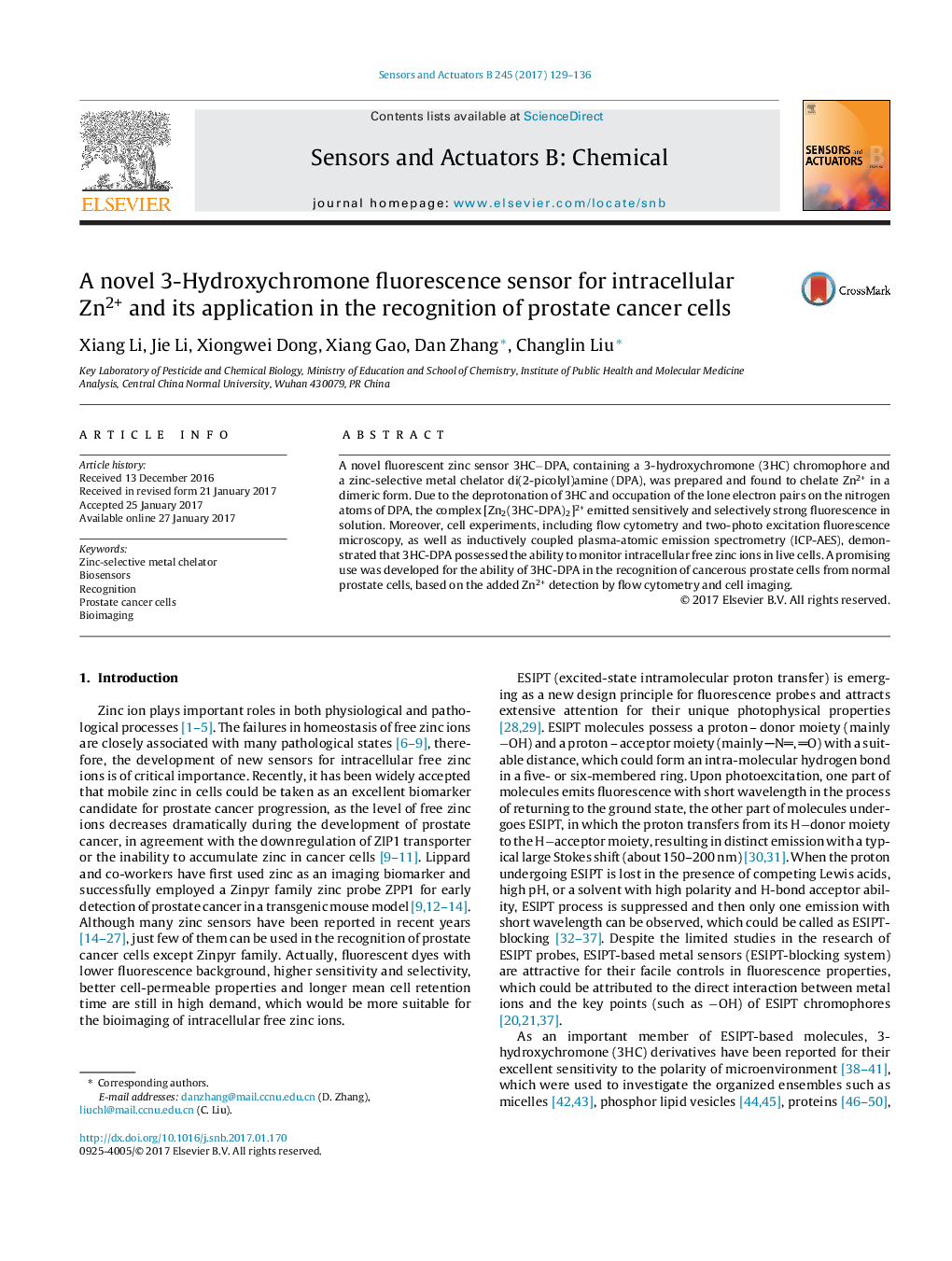| Article ID | Journal | Published Year | Pages | File Type |
|---|---|---|---|---|
| 5009870 | Sensors and Actuators B: Chemical | 2017 | 8 Pages |
â¢3HC-DPA can chelate Zn2+ in a dimeric form (2:2), emitting strong fluorescence sensitively and selectively.â¢3HC-DPA was a novel fluorescent ESIPT-blocking zinc sensor.â¢3HC-DPA provided an opportunity to further development of ESIPT-based metal sensors in bio-imaging.â¢3HC-DPA possessed the ability to monitor intracellular free zinc ions, and had an excellent mean cell retention time.â¢3HC-DPA has a promising application in the recognition of cancerous prostate cells from normal prostate cells.
A novel fluorescent zinc sensor 3HCâDPA, containing a 3-hydroxychromone (3HC) chromophore and a zinc-selective metal chelator di(2-picolyl)amine (DPA), was prepared and found to chelate Zn2+ in a dimeric form. Due to the deprotonation of 3HC and occupation of the lone electron pairs on the nitrogen atoms of DPA, the complex [Zn2(3HC-DPA)2]2+ emitted sensitively and selectively strong fluorescence in solution. Moreover, cell experiments, including flow cytometry and two-photo excitation fluorescence microscopy, as well as inductively coupled plasma-atomic emission spectrometry (ICP-AES), demonstrated that 3HC-DPA possessed the ability to monitor intracellular free zinc ions in live cells. A promising use was developed for the ability of 3HC-DPA in the recognition of cancerous prostate cells from normal prostate cells, based on the added Zn2+ detection by flow cytometry and cell imaging.
Graphical abstractDownload high-res image (133KB)Download full-size image
